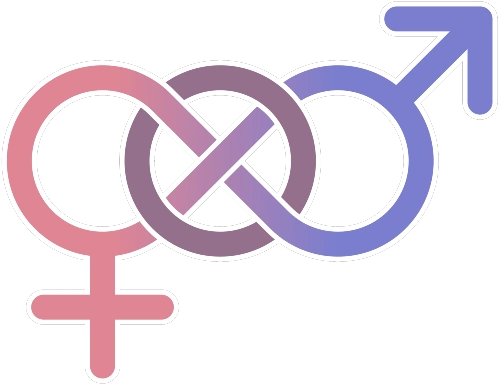Bisexuality is the sexual attraction to two genders though not only men and women. Bisexuality has in recent years been thought of as more than two because of the Bisexual Manifesto. This is because of a misunderstanding in the reading of the Manifesto. It lead to an unjust reset but in general, we know that idea of bisexuality is just not the case. Bisexuality is, however, understood as being attraction to any two genders as in the Bisexual Manifesto. The article demonstrates that there are more than just two genders, anyone can be bisexual and bisexuality can include nonbinary people. Please remember, though, the Bisexual Manifesto is not the only source explaining Bisexual attraction. It should not be treated as such. Just as with any idea, you need more than one article to back up that thought. Bisexual attraction can reach any gender but not all genders; this has often caused confusion due to it being deemed as similar as or the same as Pansexuality. However, Pansexuality is specifically attracted to all genders. Like pansexuals, many bisexuals are able to experience genderblind attraction, but preference is often not seen as a determining factor of bisexuality. Some bisexuals do have preferences to gender.
The romantic equivalent is Biromantic.
The Flag
Revealed on December 5th 1998, the bisexual flag was designed by Michael Page to represent and validate bisexuals in the LGBT community and wider society. The flag depicts three coloured horizontal stripes with the middle slightly narrower. The original flag was not three stripes however, but a gradient. Sadly, this was almost impossible to replicate at home due to the limits of technology and therefore became the three stripes more common today.
Page describes the meaning of the three colours as follows: "The pink color represents sexual attraction to the same sex, blue represents sexual attraction to the opposite sex, and the resultant overlap color purple represents sexual attraction across the gender spectrum." He also describes the flag's meaning in deeper terms, stating "The key to understanding the symbolism of the Bisexual pride flag is to know that the purple pixels of color blend unnoticeably into both the pink and blue, just as in the 'real world,' where bi people blend unnoticeably into both the gay/lesbian and straight communities."
Misconceptions
Like other LGBT identities, there are multiple misconceptions about bisexuality, including (but not limited to):
- Bisexuality being conflated with promiscuity or polyamory
- Bisexuality being called "half gay" and "half straight"
- Bisexuals being seen as greedy, or not able to pick a side
- Bisexuals being seen as unfaithful to their partner/s because of their sexuality
- Bisexuals being seen as sexually confused or frustrated
- Bisexuals being seen as transphobic
- Bisexuals only being attracted to binary genders, or being exclusive of non-binary identities.
These misconceptions often lead to the practices of biphobia, where evidence of bisexuality is ignored, removed, falsified or reexplained within cultural, historical or media sources. In its most extreme form, bisexual erasure includes denying that bisexuality exists. Despite this, there is increasing inclusion and visibility of bisexuals, particularly in the LGBT community.
History
There is a lot of bisexual history that can be viewed in both ancient cultures and modern history. The modern definition of bisexuality first took form in the 19th century. The first usage of the word "bisexual", in the sense of being sexually attracted to both women and men, was by Charles Gilbert Chaddock in his translation of Krafft-Ebing's work Psychopathia Sexualis in 1892. Prior to Krafft-Ebing, "bisexual" was usually used to mean having both female and male parts as in hermaphroditic or monoicous plants, or to mean inclusive of both males and females as in the sense of mixed-sex education.
Beginning from the 1970s, bisexuality as a distinct sexuality gained visibility in Western literature, academia, and activism. Although there is a surge of research and activism in bisexuality, many scholars and activists state that bisexuals have often been marginalized in literature, films, and research works.
Days of Recognition
The following days of the year officially recognize Bisexual and Biromantic folks.
March: Bisexual Health Awareness Month.
September: Bisexual Awareness Month.
September 16th - September 22nd: Bisexual Awareness Week.
September 23rd: Bisexual Awareness and Pride Day.
